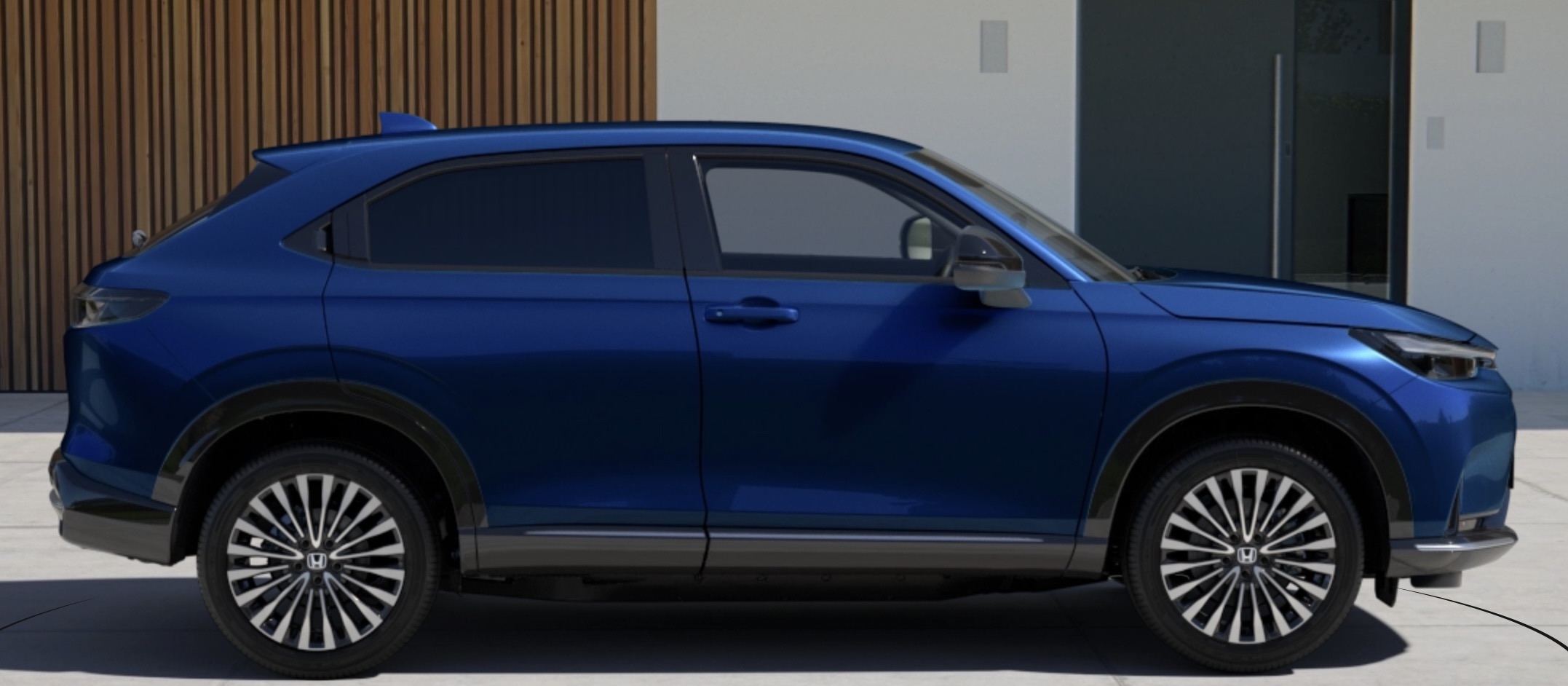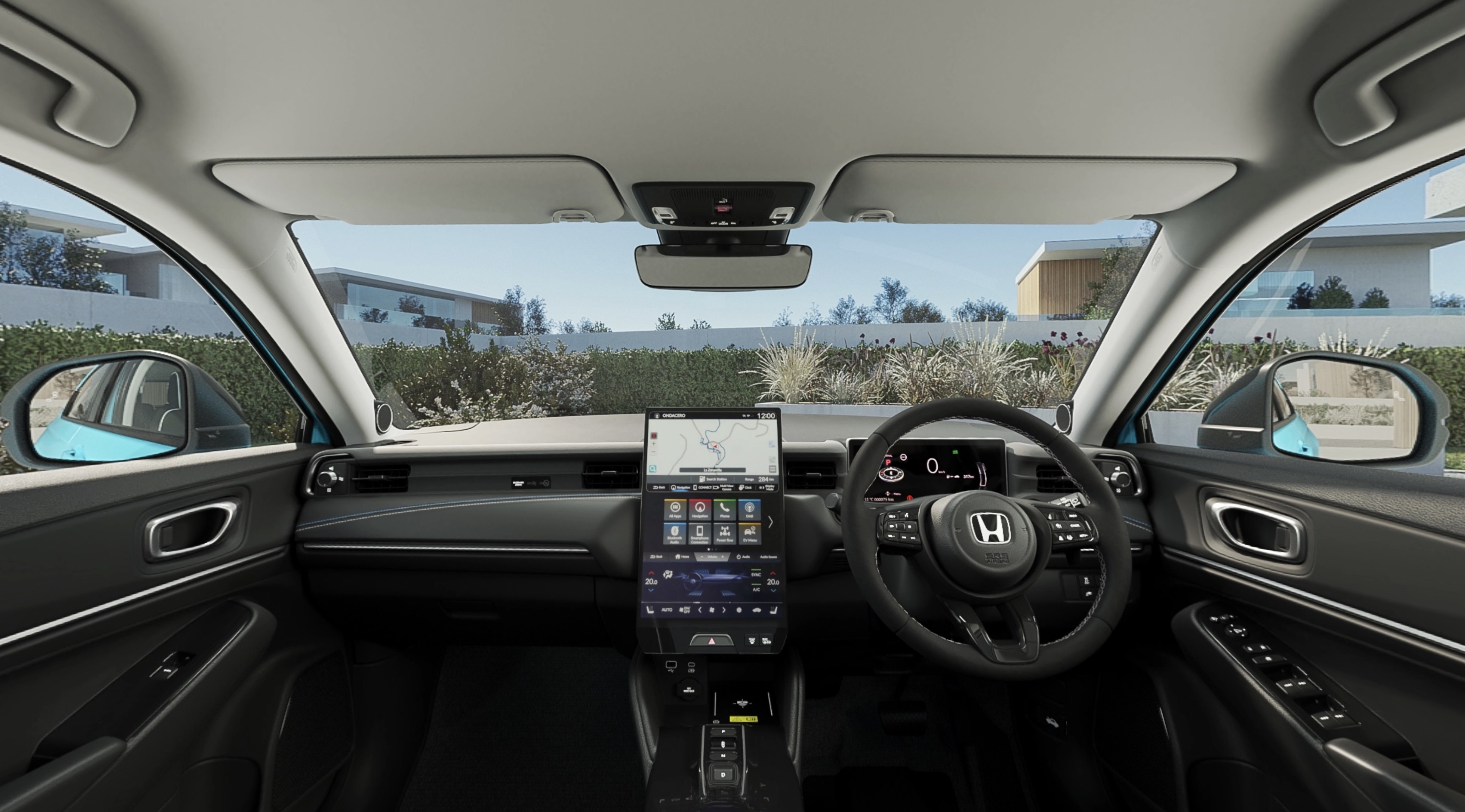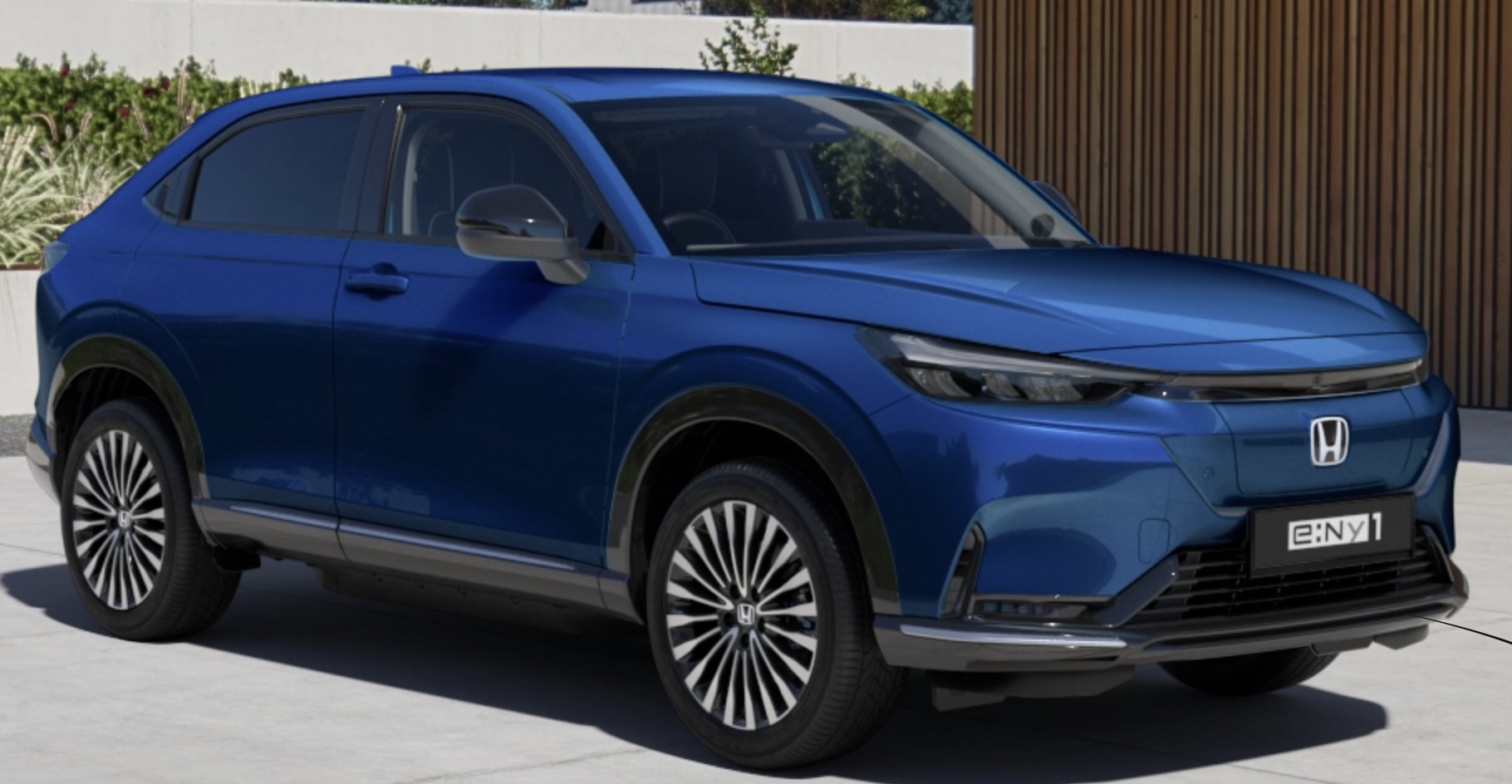Honda released the e:NY1 in late 2023. It’s been on sale for around 18 months, and I’ve had mine for just about six, and driven just under 8,000 miles in that time. So I thought I’d give it a little review: talk about what I like about it, what I don’t like, and how I feel about it as my first ever EV.
Firstly, let’s talk about the basics. In essence, this is basically an all-electric HR-V. It looks almost the same as the HR-V, it’s got the same dimensions as the HR-V, it’s basically an HR-V. This may be true on the outside, but much less so on the inside.

The first thing you’ll notice that’s different from the HR-V is the big, portrait touchscreen in the middle. A bit Tesla-like, but the big touchscreen seems to be pretty standard in new cars these days. In comparison, the HR-V has a much more normal, small touchscreen mounted at the top of the dashboard, with physical controls for the climate control underneath.
This is one of my pain points with the e:NY1: the lack of physical controls. I, like many it seems, much prefer to have physical buttons for things like the climate control that you’re using a lot while you’re driving. The kind of controls that you want to mess with a lot, like the stereo volume controls on the steering wheel. However, I think Honda has done this about as well as you can while not having an actual knob to twiddle.
The way the e:NY1 screen works is that it’s basically split into three static sections, each taking up one-third of the vertical screen space. The top third is dedicated to the built-in navigation and Apple CarPlay or Android Auto – both of which are wireless. The middle section is for car controls, so that’s got things like your trip computer and vehicle settings. Then, the bottom is dedicated 100% to climate controls. They’re always there and always in the same place. They’re also relatively well spaced out, so you can kind of build up a bit of muscle memory. It’s not as good as having actual physical controls, but I’ve found myself being able to change what I need to without looking around 80% of the time, which I think is pretty good for a touchscreen.
Overall, I actually quite like the interior. For context, I have the Elegance trim. So that’s the base model. There are only two models, though, and honestly, the differences aren’t huge (although as I’m writing this on 13/08/2024, I can only see the Elegance spec on Honda UK’s website). The Advance spec also gets a moonroof, some automatic parking, and full-surround cameras. The Elegance still has front and rear parking sensors, as well as a reversing camera.
The interior feels clean and modern, but still comfortable and welcoming. I find it very comfortable, and my partner, who is disabled, finds it incredibly comfortable as well, more so than the HR-V and ZR-V that we also tried out. The driver’s display is fully digital, and I think it’s quite clear and well laid out. The materials in the front feel pretty good on the whole, but do get a little bit cheaper-feeling as you move further down the car. The steering wheel is fully leather, and there are soft and squishy materials anywhere you might want to put your hands or elbows.

The driver’s seat has electric adjustment, and both front seats are heated. I find it a very comfortable car to sit in, even for longer journeys. As I said, my partner is disabled, so she’s very particular about where she can and can’t sit for even a short journey. The Honda Jazz I had when we met was agony for her for anything more than about 15 minutes, and even under 15 minutes wasn’t comfortable. So the fact that she’s able to sit in there for a 3 or 4 hour journey with no issues is pretty great.
Moving to the back, it’s very nice for our dog. That’s about the only passenger we ever have in there, really. In the six months we’ve had the car, we’ve probably had people in there only 8 or 10 times. But for the dog, it’s great. He has the whole back seat to himself, and there are AC vents in the back as well, so he doesn’t get too hot on a warm day.
The boot is a decent size, about 360 litres. That’s not enormous, but it’s nothing to scoff at either. And the back seats fold down almost totally flat, so it’s easy to get things all the way to the front. The boot has a false floor, which has two settings, so you can have another 2 inches or so in vertical space, or you can have a totally flat boot floor.
Unfortunately, there’s no front boot, though that seems to be quite common with EVs these days. Honda is claiming that this car – despite looking very similar to the HR-V – is a totally new platform, so it would have been nice to see them take advantage of that new platform.
Let’s actually take a look at some of the details of this new platform. Honda is calling it the – get ready – “e:N Architecture F high-performance front-driven platform”. Phew. Honda says that this is going to be the platform they use for a number of vehicles around the world in the coming years. The ‘e:N’ is to identify it as an EV, ‘F’ is a really cool letter, and ‘front-driven’ is obviously in reference to the front-wheel-drive configuration. Presumably, there will be some ‘e:N Architecture F high-performance all-wheel platform’ cars or something coming as well.
The e:NY1 in particular has one motor in the – you guessed it – front, which drives the – you guessed it – front wheels. It’s about 200 bhp and has 310 Nm of torque. So, it’s not the most powerful car on the market, but thanks to that electric motor, it’s no slouch either. 0-60 in just around 7 seconds isn’t too bad for a small-to-midsize SUV, but the 0-40 or 40-70 is where it’s at. Thanks to all that torque being available immediately, pulling away at a junction or roundabout is great. This is one of those advantages of basically all EVs, and it’s no different in this e:NY1.
The e:NY1 comes with a 68.8 kWh battery pack, with about 60 or so being the usable capacity. Now, this is where we get to another one of the downsides: the charging. The e:NY1 maxes out its AC charging at 11 kW, and DC fast charging at a rather small 78 kW. Now, some EVs, like the Ioniq 5, can charge at over 200 kW, and 2024 model Porsche Taycans can charge at up to 320 kW. So that makes the well under 100 kW from the e:NY1 pretty poor, actually.
Fortunately, I don’t often have to charge using DC fast charging, as probably 99% of my charging happens using a regular home charger, with the car plugged in overnight. The one really long trip we’ve done was around 400 miles total. The e:NY1 claims a range of 256 miles, and in the summer we’ve actually been getting around 230 or 240 with the air conditioning on. During the winter, that was closer to 180-190 miles with climate control.
This trip was two legs, 200 miles each. One up to the destination, one back home. On the way up, we stopped to charge on the M4 and plugged into a 150 kW charger. We then went inside the services and got some breakfast and went to the toilet, then came out and unplugged the car and went on our way. In all, we were probably there about 20 minutes, and we got something like 50% charge in that time. And that was absolutely fine, because it gave us way more charge than we actually needed to finish the trip, and only took as long as we took in the services, so we didn’t spend any more time than we would have in an ICE car.
If you can charge like this, doing almost all of it at home – or at work – and then only a little bit at fast DC stations, then you’ll have zero issues with having an EV. If you can’t charge at home, then you probably shouldn’t make the switch yet; it just won’t be a good experience.
Now, I’ve only had one big problem with the e:NY1, and I had it on this trip. It was resolved by the dealer very quickly and very well, but it was quite a bad problem. When we’d finished our first leg of that trip, we had two charging options at the hotel. There was a 22 kW AC charger (of which we could use 11 kW) and there was a V4 Tesla supercharger. I opted for the Tesla charger, just so I could get the charging over and done with early in the evening so that the car was all ready to go the next morning. Well, it did charge the car up absolutely fine. But, when I unplugged and started to drive away, I got a dash full of errors, stating that the high-voltage charging was broken. We confirmed that by driving a short way to another 150 kW charger. Absolutely nothing from the charger. Then we tried a 50 kW charger. Same thing. This meant that a couple of days later, when it came to getting home, we had to stop at a service station that had a 22 kW charger, as this was working fine. It meant a stop of about 3 hours to get enough charge on the way to get home.
To Honda’s credit, it was sorted out very quickly. They confirmed that it was a computer error, and there was no actual damage to the car’s battery or charging circuits. Their theory was that it was some kind of communication issue between the car and the Tesla charger. This seemed to be confirmed by the fact that this issue was apparent on Honda E cars but was resolved with a software update. This is something I found out while searching for anything on this, quite stressed in a hotel waiting to hear back from the Honda dealer.
As far as I know, there hasn’t been a software update to resolve this yet, but I’m hoping there will be, because this really is the only proper issue I’ve had with the car. It’s been pretty easy to avoid Tesla chargers – the charging infrastructure in the UK is actually a lot better than most people think, even if it still has a ways to go – but having the option of using one of the biggest charging networks would be nice. But again, it’s a software thing; there was absolutely zero damage to the car itself. If that had turned out differently, then this review would have taken a very different turn.
On the whole, I do really like the car. It’s not the most exciting or over-the-top kind of car, but as a practical, family, small-to-midsize SUV, it ticks pretty much all the boxes. The range is decent, if not extraordinary, and the charging leaves something to be desired, but the car’s comfy, nice to drive, pretty quiet, and overall it’s just a nice place to be.
I’ve seen most places give the e:NY1 somewhere between 6 and 8/10. I’d lean towards the high end there, and I think an 8/10 is a completely fair score. There are some things that could do with some improvement, but for most normal people, there’s really not a lot to complain about with this car.
